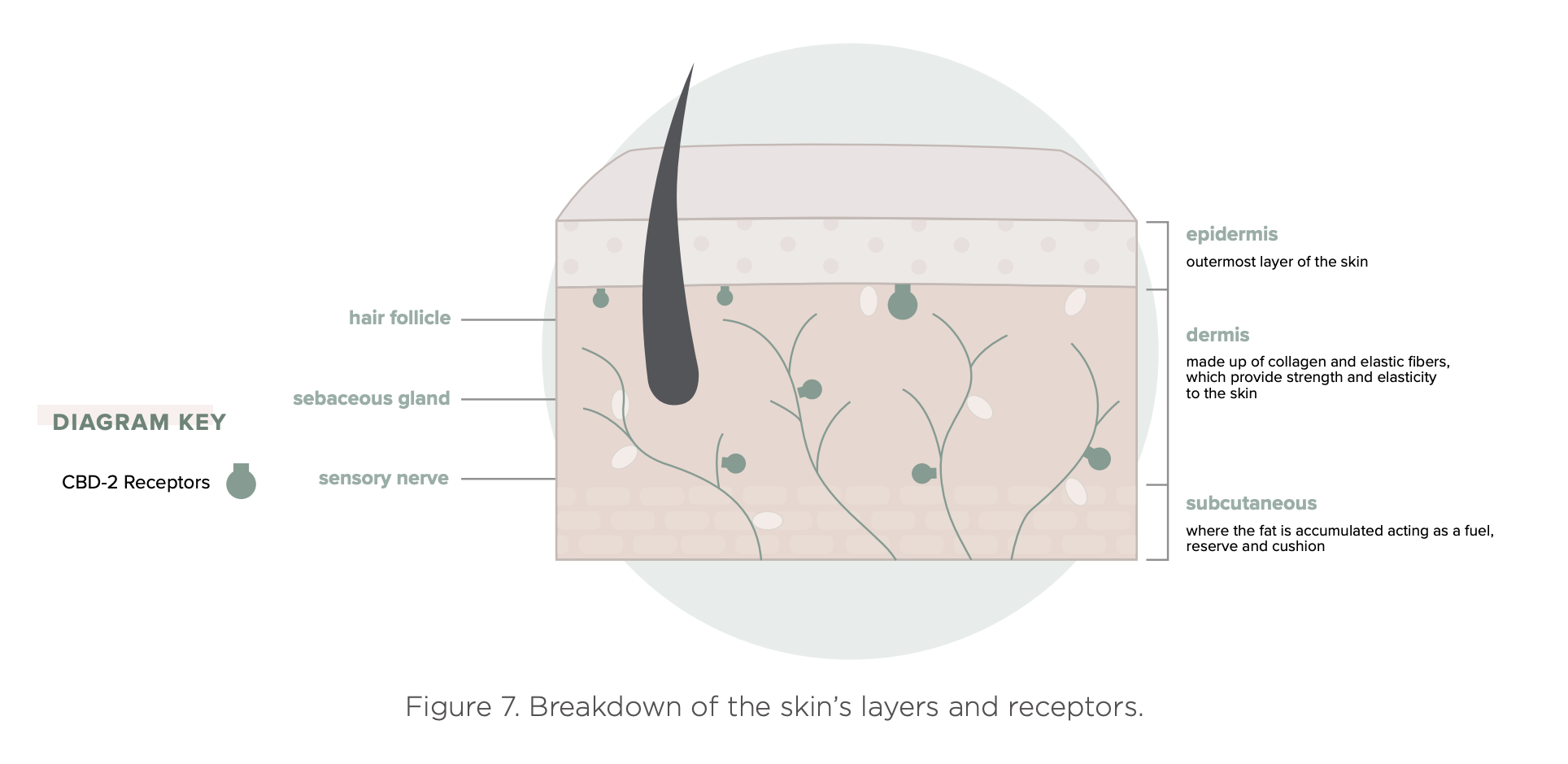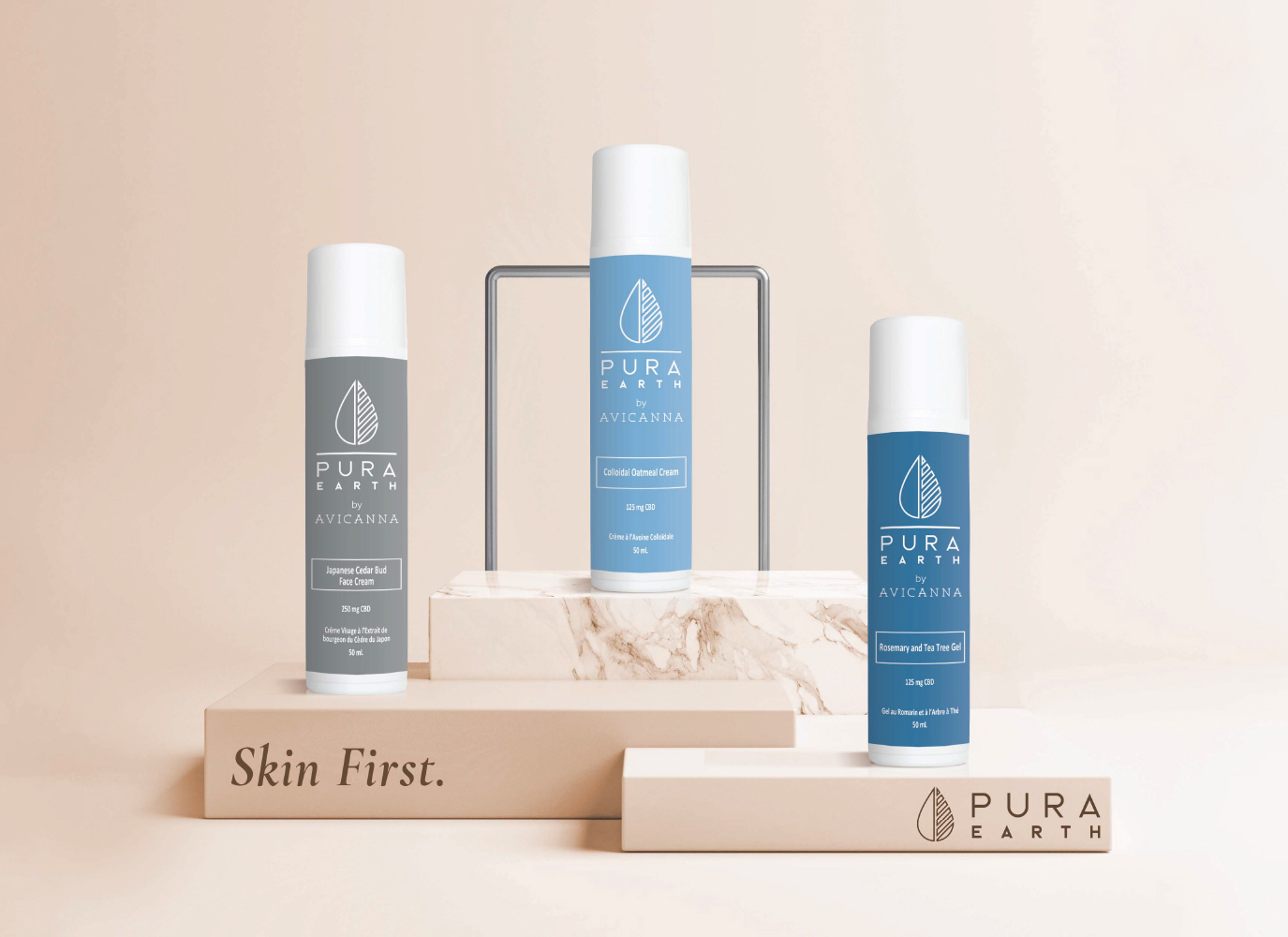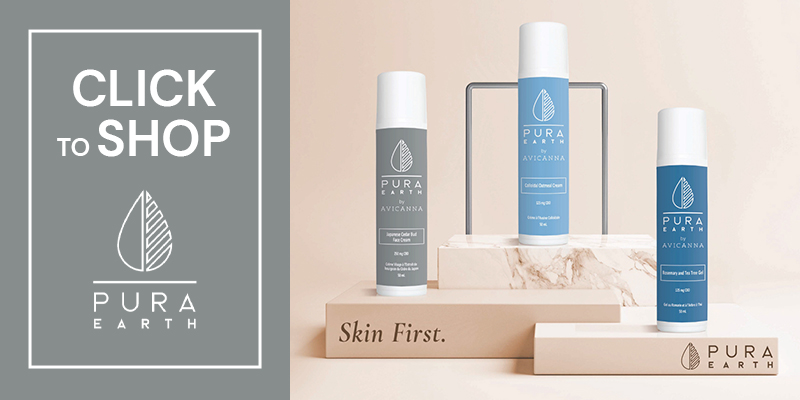CBD & Skincare
The Endocannabinoid System & Your Skin Cannabidiol (CBD) is a non-psychoactive compound extracted from the cannabis plant that can be applied on the skin to interact with our ECS for beneficial effects on the skin’s microbiome such as water retention, anti-inflammatory and anti-oxidant.1,2
The Endocannabinoid System & Your Skin

What is the Endocannabinoid System?
CBD and other cannabinoids interact with the skin’s ECS. The ECS plays an important role in regulating and balancing the normal function of the skin.1 The ECS includes cannabinoid receptors and endocannabinoids, which are located in various compartments of the skin layers including the epidermis, hair follicles and sebaceous (oil) glands.1-3 The maintenance of a healthy skin barrier and its functioning is achieved through the interactions of these communication pathways. These endocannabinoids are released on demand, which means that it depends on the needs of the skin in order to know when and how to balance its physiological functioning.

How CBD Works on Your Skin
CBD binds to receptors in the skin that are critical to maintaining a healthy skin barrier and a balanced skin homeostasis1,2. Some of these receptors are known as endocannabinoid receptors, CB1 and CB2, that are critical to maintaining a fine-tuned barrier by regulating skin growth, immune responses, pain and touch sensation. 22 CBD binds to receptors in the skin that are critical to maintaining a healthy skin barrier and a balanced skin homeostasis1,2. CBD has also been shown to bind to other receptors present on immune or nerve fibers, providing a wide range of benefits in healthy and damaged skin cells2
CBD has been shown to:
• Interaction with key receptors responsible for retaining water in skin layers1,2.
• Demonstrate anti-inflammatory effects to decrease inflammation throughout skin layers that may lead to cell death1,2.
• Increase anti-oxidants action in the skin to combat the generation of free radicals, molecules that contribute to aging and cell death3-6.
• Interact with the skin microbiome, or skin bacteria populations, to decrease the overproduction of bacteria that may cause infections or swelling around skin pores8.
• Decrease the activity of sebocytes, cells that are known to contribute to the over production of skin oil in acne9.
REFERENCES:
1. Tóth, K. F., et al. (2019). Cannabinoid Signaling in the Skin: Therapeutic Potential of the “C(ut)cannabinoid” System. Molecules (Basel, Switzerland), 24(5), 918. https://doi.org/10.3390/molecules24050918 |
2. Baswan, S. M., et al. (2020). Therapeutic Potential of Cannabidiol (CBD) for Skin Health and Disorders. Clinical, cosmetic and investigational dermatology, 13, 927–942. https://doi.org/10.2147/CCID.S286411
3. Juknat, A., et al (2012). Differential transcriptional profiles mediated by exposure to the cannabinoids cannabidiol and Δ9-tetrahydrocannabinol in BV-2 microglial cells. British journal of pharmacology, 165(8),
2512–2528. |
4. Juknat, A., Pietr, M., Kozela, E., Rimmerman, N., Levy, R., Gao, F., Coppola, G., Geschwind, D., & Vogel, Z. (2013). Microarray and pathway analysis reveal distinct mechanisms underlying cannabinoid-me[1]diated modulation of LPS-induced activation of BV-2 microglial cells. PloS one, 8(4), e61462. https://doi.org/10.1371/ journal.pone.0061462 |
5. Atalay S, et al. (2020). Antioxidative and Anti-Inflammatory Properties of Cannabidiol. Antioxidants. 9(1):21.
6. Gegotek, A., et al. (2019). The Differences in the Proteome Profile of Cannabidiol-Treated Skin Fibroblasts following UVA or UVB Irradiation in 2D and 3D Cell Cultures. Cells, 8(9), 995. |
7. Zengin, G., et al. (2018). Chromatographic Analyses, In Vitro Biological Activities, and Cytotoxicity of Cannabis sativa L. Essential Oil: A Multidisciplinary Study. Molecules (Basel, Switzerland), 23(12), 3266.
8. Oláh, A., Tóth, B., et al. (2014). Cannabidiol exerts sebostatic and anti-inflammatory effects on human sebocytes. The Journal of clinical investigation, 124(9), 3713–3724
9. Andrade, J. M., Faustino, C., et al, (2018). Rosmarinus officinalis L.: an update review of its phytochemistry and biological activity. Future science OA, 4(4), FSO283.
10. Tsai, T.H., Chuang, L.T., et al, (2013). Rosmarinus officinalis extract suppresses Propionibacterium acnesinduced inflammatory responses. Journal of medicinal food, 16(4), 324-333.
11. Committee on Herbal Medicinal Products (HMPC). (2013). Assessment report on Melaleuca alternifolia (Tea tree oil) and other species of Melaleuca, aetheroleum. European Medicines Agency. Article 16d(1), 50-62.
12. Carson, C.F., Hammer, K.A., & Riley, T.V.. (2006). Melaleuca alternifolia (Tea Tree) oil: a review of antimicrobial and other medicinal properties. Clinical microbiology reviews, 19(1), 50-62.
13. Horiba, H., et al. (2016). Biological Activities of Extracts from Different Parts of Cryptomeria japonica. Natural product communications 11(9), 1337-1342.



